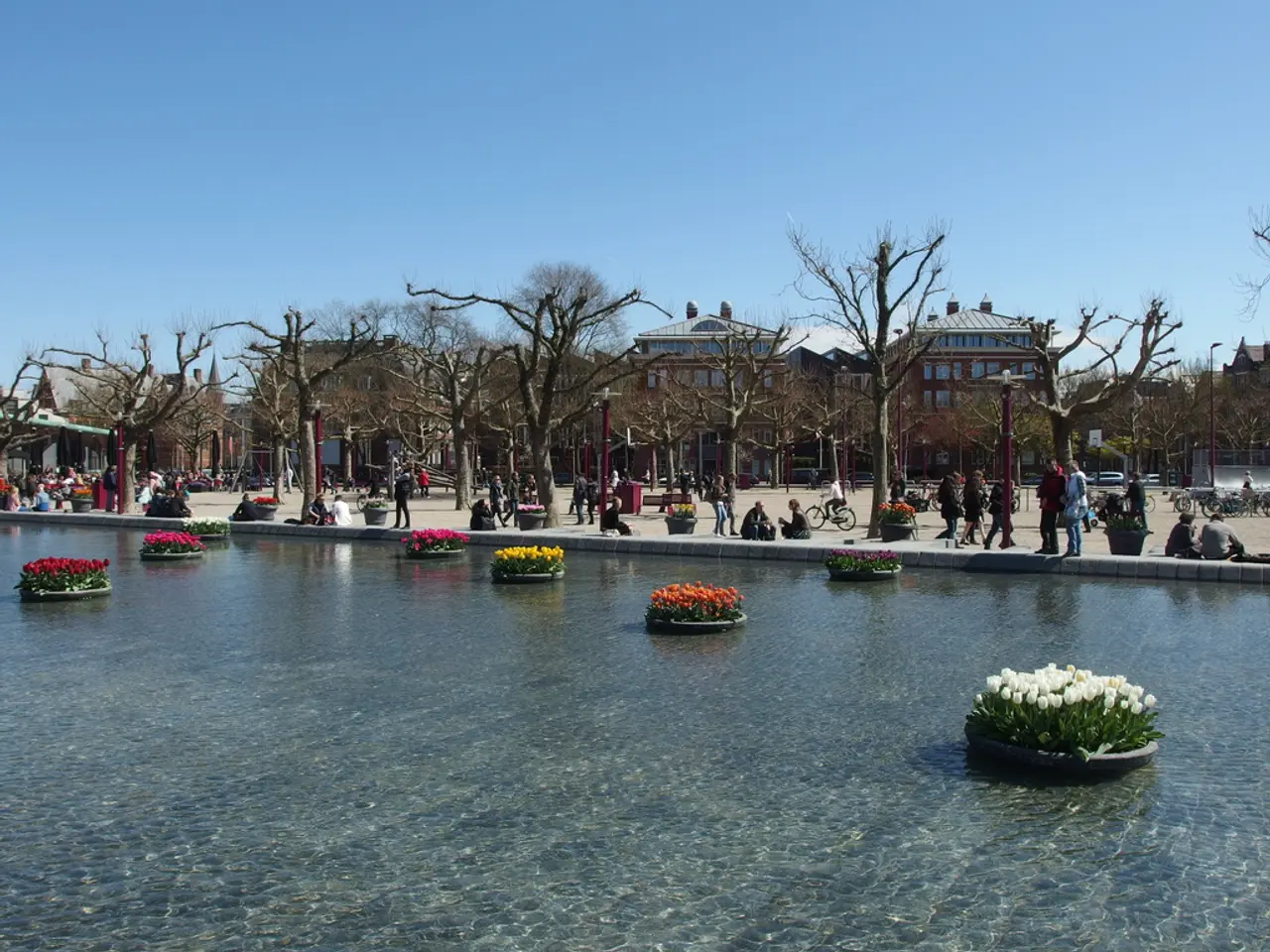Urban Green Spaces: Design Ideas for Urban Gardens in Osnabrück
In the heart of cities, space for gardening can sometimes be a luxury. However, innovative solutions like raised beds and green roofs are transforming urban landscapes, making gardening more accessible and beneficial than ever before.
Raised beds, a practical and versatile solution for urban gardening, require little space and easy work. They can be built from various materials such as wood, stone, or metal. A systematic approach to building raised beds involves starting with coarse filling material, adding a liner, and topping it off with a nutrient-rich soil layer. Weak points in raised beds, like joints and edges, can allow moisture to enter, but plastic profiles can help protect against this. With the edges determining their longevity, raised beds built this way can last for many years and provide lasting joy.
Green roofs, on the other hand, are not just limited to traditional gardens. They can be implemented on flat roofs and garage roofs, expanding urban green spaces. Green roofs can help reduce the urban heat island effect, improve air quality, and provide habitats for wildlife. They can be designed with a variety of plants, from sedums to grasses and even small trees, depending on the roof's size and structure. Simple extensive greening with sedum or herbs can improve urban climate by binding fine dust, retaining rainwater, and cooling roof surfaces.
The right layering for green roofs includes root-resistant sealing, protection and drainage layer, filter fleece, substrate, and finally the planting. Maintenance for green roofs is limited, requiring check-ups twice a year, watering during dry periods, and keeping drains clean. Using rainwater for irrigation is beneficial as it's low in calcium and plant-friendly. Utilising rainwater harvesting not only conserves the environment but also saves money and eases the burden on sewage systems.
Cities like Dortmund and Osnabrück are leading the way in implementing green roofs. Dortmund hosts pilot projects for green roofs on public buildings, especially in the district Neu-Schüren as part of a "sponge city" initiative promoting rainwater retention and green spaces. Osnabrück, too, has pilot projects with public buildings equipped with green roofs, serving as a model for private homeowners. Courtyard and garage roofs in Osnabrück are suitable for rainwater harvesting via rain barrels or cisterns.
A checklist for stable raised beds includes planning for a drainage layer, securing edges with profiles or metal strips, using only stainless steel screws, and predrilling. A simple system of barrel and hose can supply raised beds and pots with rainwater. By embracing these green solutions, cities can not only enhance their urban aesthetics but also contribute to a healthier and more sustainable environment.
Read also:
- Budget cuts at federal and state levels jeopardize advancements in fighting HIV and AIDS within Dallas County
- Strategies for Maintaining and Boosting Physical Activity as You Grow Older
- Understanding Prediabetes: A Precursory Condition to Diabetes
- Strategies for Strengthening a Nigerian Infant's Immune System




